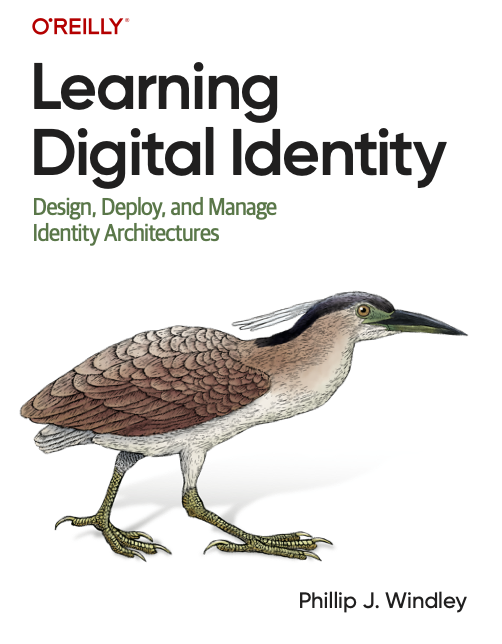

My new book Learning Digital Identity from O'Reilly Media covers many of the topics in this post such as multi-factor authentication, authorization and access control, and identity policy development in depth.
Zero Trust is a security framework that is better attuned to the modern era of sophisticated threats and interconnected systems. Past practices included techniques like virtual private networks (VPNs) that tried to emulate the idea of an intranet where trusted computers and people were protected from hackers by a firewall that "kept the bad stuff out." As more and more work has gone remote and personal devices like phones, tablets, and even laptops are being used for work, a firewall—virtual or physical—offers less and less protection. Often the bad actors are hard to tell apart from your employees, partners, and customers.
Zero Trust operates on a simple yet powerful principle: "assume breach." In a world where network boundaries are increasingly porous and cyber threats are more evasive than ever, the Zero Trust model centers around the notion that no one, whether internal or external, should be inherently trusted. This approach mandates continuous verification, strict access controls, and micro-segmentation, ensuring that every user and device proves their legitimacy before gaining access to sensitive resources. If we assume breach, then the only strategy that can protect the corporate network, infrastructure, applications, and people is to authorize every access.
Defense in Depth
Zero Trust solutions offer a multifaceted defense against the evolving threat landscape, encompassing various aspects of network security, infrastructure protection, user authentication, and application security. These solutions collectively work together to uphold the "never trust, always verify" principle. Here are some of the different kinds of Zero Trust solutions that safeguard networks, infrastructure, people, and applications from malicious actors:
- Network Security:
- Micro-Segmentation: Dividing the network into smaller segments to limit lateral movement of threats and control access between different segments.
- Software-Defined Perimeter (SDP): Creating an invisible perimeter around resources, allowing authorized users and devices to connect while remaining invisible to unauthorized entities.
- Infrastructure Protection:
- Identity and Access Management (IAM): Implementing strong identity verification and access controls to ensure that only authenticated users can access critical resources.
- Endpoint Security: Employing solutions that monitor and secure devices (endpoints) to prevent malware infiltration and unauthorized access.
- User Authentication:
- Multi-Factor Authentication (MFA): Requiring users to provide multiple forms of verification (e.g., password, fingerprint, OTP) before granting access.
- Risk-Based Authentication: Assessing user behavior and context to dynamically adjust authentication requirements based on potential risks.
- Application Security:
- Application Whitelisting: Allowing only approved applications to run, preventing the execution of unauthorized or malicious software.
- Application-Centric Authorization and Security: Implementing application-specific authorization policies and implementing security measures directly within applications, such as encryption, code signing, and runtime protection.
These Zero Trust practices collectively work to defend corporate assets in depth and implement a security architecture that assumes breach and enforces rigorous access controls. This not only reduces the attack surface, but also minimizes potential damage. By safeguarding networks, infrastructure, people, and applications, organizations can better defend against the increasingly sophisticated tactics employed by malicious actors in the digital realm. A comprehensive Zero Trust approach ensures that security is embedded at every layer, providing a robust defense against cyber threats.
Implementing Zero Trust
Some of the components of a zero trust strategy can be bought. For example, network equipment vendors offer products that make it easier to implement micro segmentation or define a perimeter. You can buy IAM solutions that make it easier to up your authentication game to simultaneously reduce phishing and the burden on your employees, partners, and customers (hint: use passkeys). You can buy a endpoint security clients for devices that make it easier to manage corporate devices and to know the security posture of both corporate and personal devices. Authorization platforms like Cedar are available to control access to your infrastructure and applications.
While vendors provide ready-made solutions for many aspects of Zero Trust, you'll still need to tailor these solutions to your organization's unique needs and integrate them into a coherent strategy. Here's breakdown of the things you need to do on your own (i.e., you can't buy these):
- Policy Development:
- Access Policies: You'll need to design access policies that define who can access what resources and under what circumstances.
- Authentication Policies: Developing policies for user authentication, device verification, and authorization.
- Organizational Policies: The organization must define how it governs the various aspects of Zero Trust and the underlying identity infrastructure.
- Identity and Access Management (IAM):
- Identity Management Infrastructure: Building a user identity repository, user directories, and user profiles.
- Access Control Logic: Developing the logic that enforces access controls based on user roles and permissions.
- Custom Integrations:
- Integration with Existing Systems: If you have legacy systems, you might need to develop custom integrations to ensure they adhere to the Zero Trust model.
- Training and Awareness:
- Security Awareness Programs: Creating training materials and programs to educate employees and stakeholders about Zero Trust principles and best practices.
- Continuous Monitoring and Analysis:
- Threat Detection Logic: Developing mechanisms to continuously monitor network traffic, endpoints, and applications for suspicious activities.
The Zero Trust components in the preceding list require internal expertise and a deep understanding of your organization's structure and workflows. You might need to change how your organization does authentication, develop a process for installing and maintaining device clients, perform numerous integrations, create authorization policies as well as organizational policies, build threat dashboards, and institute a training program. You can get help doing this, but ultimately it's up to you.
Zero Trust represents a big change for many organizations. Implementing a Zero Trust strategy involves not just changing the architecture of your network, infrastructure, and applications, but your organizational culture as well. In a hyper-connected digital landscape marked by relentless cyber threats and evolving attack vectors, the Zero Trust model is the best defense available. By challenging the conventional "trust but verify" approach, Zero Trust asks organizations to embrace an "assume breach" mindset, demanding continuous vigilance to authorize every access.
Photo Credit: Open Gate from aitoff (Pixabay License)




